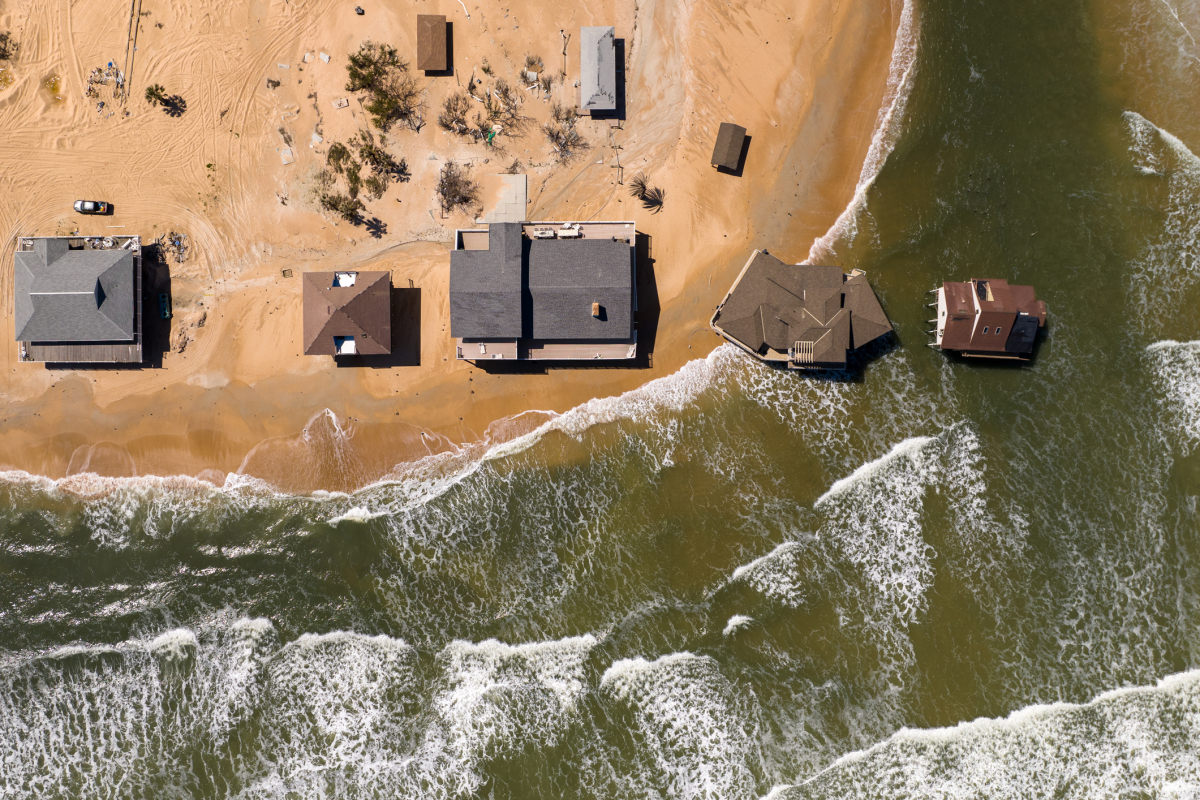Science
Sea Level Rise Threatens Over 100 Million Buildings, Study Warns

A recent study led by researchers at McGill University has revealed alarming projections regarding the impact of sea level rise on buildings across the Global South. The research suggests that more than 100 million buildings could be at risk of regular flooding if fossil fuel emissions are not drastically reduced. Published in the journal npj Urban Sustainability, this study is the first comprehensive assessment of how long-term sea level rise will affect coastal infrastructure in regions including Africa, Southeast Asia, and Central and South America.
Using detailed satellite imagery and elevation data, the research team conducted a building-by-building analysis to estimate the number of structures that would be inundated under various sea level rise scenarios. Co-author Prof. Natalya Gomez, a Canada Research Chair in Ice Sheet–Sea Level Interactions, emphasized the long-term consequences of climate change. “Sea level rise is a slow, but unstoppable consequence of warming that is already impacting coastal populations and will continue for centuries,” she stated. According to Gomez, modest projections of sea level increase, such as 0.5 metres, could still lead to significant flooding of approximately three million buildings.
Projected Scenarios and Risks
The study examined a range of scenarios, from 0.5 metres to 20 metres of sea level rise. The findings indicate that exposure to flooding increases sharply with higher projections. Should emissions continue unabated, a rise of five metres or more could place over 100 million buildings in jeopardy. Many of these structures are located in densely populated, low-lying areas, raising concerns about the potential for widespread disruption to entire neighbourhoods, crucial infrastructure, and cultural heritage sites.
Co-author Prof. Jeff Cardille expressed surprise at the scale of the risk. He noted that certain coastal nations face higher exposure levels due to the specific topography and distribution of buildings in those areas. The implications of such findings are profound, affecting not only local populations but also global supply chains.
Implications for Urban Planning and Policy
The researchers argue that the insights from this study are critical for urban planners, policymakers, and communities preparing for the inevitable consequences of sea level rise. Eric Galbraith, another professor involved in the research, highlighted the interconnectedness of climate change effects. “Every one of us will be affected by climate change and sea level rise, whether we live by the ocean or not,” he remarked. The disruption of essential infrastructure such as ports and refineries could severely impact the global economy and food systems.
To aid in understanding the exposure levels, the study includes an interactive map available through Google Earth Engine. This tool allows decision-makers to visualize regions facing the greatest risks and can inform climate adaptation strategies, including the construction of protective infrastructure and adjustments to land use planning.
Lead author Maya Willard-Stepan, who conducted the research as part of her undergraduate project, underscored the urgency of the findings. “There is no escaping at least a moderate amount of sea level rise,” she said. “The sooner coastal communities can start planning for it, the better chance they have of continuing to flourish.”
The study titled “Assessing the exposure of buildings to long-term sea level rise across the Global South” was co-authored by M. Willard-Stepan, N. Gomez, J. A. Cardille, E. D. Galbraith, and E. M. Bennett. It serves as a crucial call to action for regions that will face significant challenges in the coming decades.
-

 Politics4 weeks ago
Politics4 weeks agoSecwepemc First Nation Seeks Aboriginal Title Over Kamloops Area
-

 World5 months ago
World5 months agoScientists Unearth Ancient Antarctic Ice to Unlock Climate Secrets
-

 Entertainment5 months ago
Entertainment5 months agoTrump and McCormick to Announce $70 Billion Energy Investments
-

 Science5 months ago
Science5 months agoFour Astronauts Return to Earth After International Space Station Mission
-

 Lifestyle5 months ago
Lifestyle5 months agoTransLink Launches Food Truck Program to Boost Revenue in Vancouver
-

 Technology3 months ago
Technology3 months agoApple Notes Enhances Functionality with Markdown Support in macOS 26
-

 Lifestyle3 months ago
Lifestyle3 months agoManitoba’s Burger Champion Shines Again Amid Dining Innovations
-

 Top Stories2 months ago
Top Stories2 months agoUrgent Update: Fatal Crash on Highway 99 Claims Life of Pitt Meadows Man
-

 Politics4 months ago
Politics4 months agoUkrainian Tennis Star Elina Svitolina Faces Death Threats Online
-

 Sports5 months ago
Sports5 months agoSearch Underway for Missing Hunter Amid Hokkaido Bear Emergency
-

 Politics5 months ago
Politics5 months agoCarney Engages First Nations Leaders at Development Law Summit
-

 Technology5 months ago
Technology5 months agoFrosthaven Launches Early Access on July 31, 2025





















